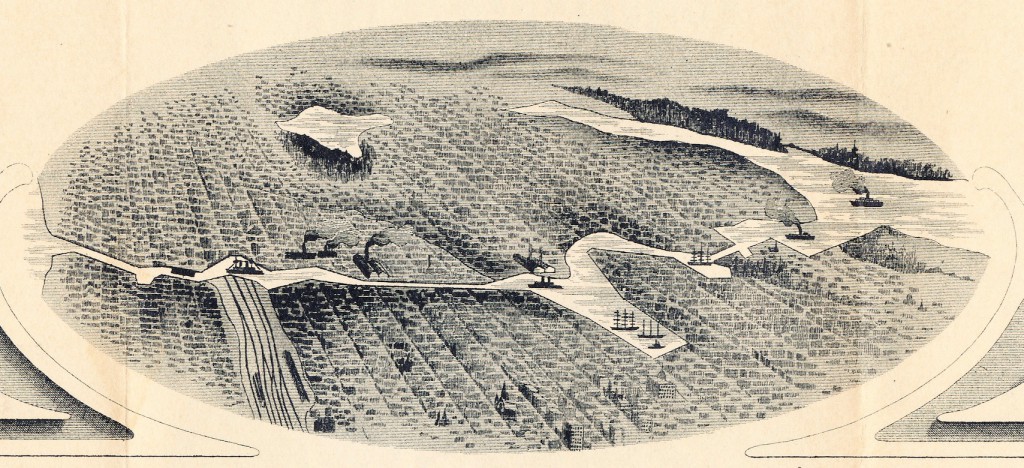Yesterday, I was fortunate to meet Carol Whipple, great granddaughter of one of Seattle’s more important early citizens, Roger Sherman Greene. Greene had arrived in the state in 1870, when President Ulysses Grant appointed him to be associate justice to the Washington Territory Supreme Court. Greene moved to Seattle in 1882, where he became involved in civic politics and activities. In particular, he was well known for trying to prevent a lynching of two men in Pioneer Square and for standing up to white mobs during anti-Chinese riots in the city in 1885. Greene was also a principal player in the efforts to build a ship canal and locks in Seattle.
 During our discussion, Carol showed us her ancestor’s personal stock certificate for the Lake Washington Canal Association. Formed in 1907 by people such as Greene, Thomas Burke, former governor John McGraw, and J.S. Brace, owner of the biggest mill on Lake Union, the LWCA was created to foster the building of the canal. It did so primarily by obtaining the rights to the canal, which had been given to developer James Moore. (Moore’s plan called for as single, much-too-small wooden lock, but he was unable to meet his obligations so transferred the rights to the LWCA.) The LWCA then transferred the rights to King County, which was responsible for building the canal.
During our discussion, Carol showed us her ancestor’s personal stock certificate for the Lake Washington Canal Association. Formed in 1907 by people such as Greene, Thomas Burke, former governor John McGraw, and J.S. Brace, owner of the biggest mill on Lake Union, the LWCA was created to foster the building of the canal. It did so primarily by obtaining the rights to the canal, which had been given to developer James Moore. (Moore’s plan called for as single, much-too-small wooden lock, but he was unable to meet his obligations so transferred the rights to the LWCA.) The LWCA then transferred the rights to King County, which was responsible for building the canal.
 Holding the certificate was certainly my day’s highlight, though Carol’s story
Holding the certificate was certainly my day’s highlight, though Carol’s story  about finding her ancestor’s glass eye in a collection of family memorabilia was a close second. It is a lovely document. In particular, the etching that shows the canal system is a true work of art, beautifully depicting Green Lake, Lake Washington, and the cuts at Montlake and Fremont. On the right side is another symbol of Seattle from the era, the totem pole that had been erected in Seattle in late 1899.
about finding her ancestor’s glass eye in a collection of family memorabilia was a close second. It is a lovely document. In particular, the etching that shows the canal system is a true work of art, beautifully depicting Green Lake, Lake Washington, and the cuts at Montlake and Fremont. On the right side is another symbol of Seattle from the era, the totem pole that had been erected in Seattle in late 1899.
Known as the Chief-of-All-Women pole, it had been carved earlier in the century to honor a Tlingit noblewoman of the Ganaxadi Raven Clan in southeast Alaska. The pole had made its way to Seattle when a group of Seattle businessmen had cut it down, stolen it, and brought it by ship to the city. In the words of the Seattle Post Intelligencer, it was “a great and wonderful thing and a grand acquisition for the city.” The pole would be burned down anonymously in 1938 and replaced with one carved in Alaska.
The LWCA ultimately succeeded in their goal. The canal officially opened on July 4, 1917, a date that is being commemorated this year and next.